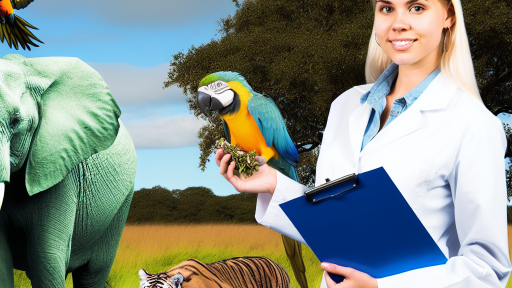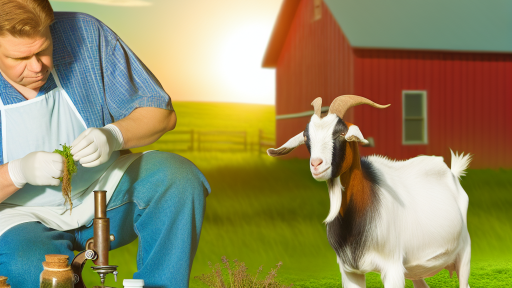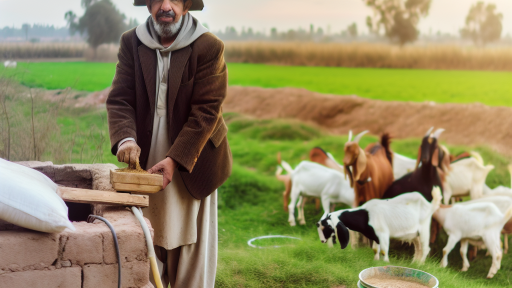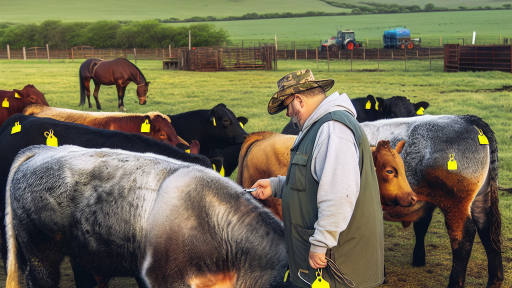Introduction to Sustainable Fish Farming
Importance of Sustainable Fish Farming
Sustainable fish farming plays a vital role in food security.
It addresses the growing global demand for seafood.
Moreover, it reduces the pressure on wild fish populations.
As a result, it helps maintain ecological balance.
Consequently, we can preserve marine biodiversity.
Benefits of Sustainable Practices
Sustainable fish farming offers numerous economic advantages.
It can reduce operational costs through efficient resource use.
Additionally, it often leads to healthier fish populations.
Healthy fish contribute to higher quality seafood products.
This, in turn, can enhance marketability and consumer trust.
Environmental Advantages
Implementing sustainable practices minimizes environmental impact.
It lowers pollution levels in aquatic ecosystems.
Furthermore, it reduces the need for harmful chemicals.
This approach promotes healthier water quality for all species.
Community and Social Impact
Sustainable fish farming creates jobs in local communities.
Transform Your Agribusiness
Unlock your farm's potential with expert advice tailored to your needs. Get actionable steps that drive real results.
Get StartedIt fosters economic stability and development.
By supporting local farmers, communities become more resilient.
This empowers local populations to participate in food production.
Key Principles of Sustainable Aquaculture Practices
Minimizing Environmental Impact
Sustainable fish farming aims to minimize environmental harm.
It uses efficient systems to reduce waste production.
Farmers implement practices that protect natural ecosystems.
Furthermore, they monitor water quality to ensure healthy habitats.
Responsible Sourcing of Feed
Using responsibly sourced feed is crucial for sustainability.
Aquaculture operations often opt for plant-based feeds.
These alternatives can reduce reliance on wild fish stocks.
Additionally, using local feed ingredients supports regional economies.
Preserving Biodiversity
Sustainable aquaculture promotes biodiversity within farming systems.
Farmers can cultivate multiple species of fish and shellfish.
This diversity enhances ecosystem resilience and productivity.
Moreover, it reduces vulnerability to diseases and market fluctuations.
Implementing Best Practices in Management
Effective management practices are essential for sustainability.
Farmers should follow sound operational guidelines to maintain health.
Regular monitoring of fish growth and environmental conditions is necessary.
Additionally, staff training in sustainable methods ensures compliance.
Community Engagement and Social Responsibility
Engaging with local communities strengthens sustainable practices.
Fish farms should support local economies and food security.
Collaboration with stakeholders fosters knowledge sharing and innovation.
Furthermore, transparency in operations builds trust with consumers.
Selecting the Right Species for Sustainable Fish Farming
Understanding Species Selection
Selecting the right species is crucial for sustainable fish farming.
Showcase Your Farming Business
Publish your professional farming services profile on our blog for a one-time fee of $200 and reach a dedicated audience of farmers and agribusiness owners.
Publish Your ProfileThe choice impacts both the environmental and economic viability of the farm.
Farmers should consider local ecosystems when choosing species.
Additionally, the species should have a stable market demand.
Furthermore, compatibility with current farming conditions is essential.
Popular Sustainable Species
Various species are ideal for sustainable fish farming.
These include tilapia, catfish, and trout.
- Tilapia thrives in diverse farming conditions.
- Catfish are robust and resistant to disease.
- Trout requires colder water but commands high market prices.
Each of these species offers unique advantages.
Considerations for Species Selection
Farmers should evaluate several factors when selecting fish species.
These factors include growth rate, feed conversion ratio, and market preferences.
Additionally, understanding species-specific dietary needs is essential.
This knowledge ensures healthy growth and reduces waste.
Moreover, farmers must also consider potential environmental impacts.
Benefits of Native Species
Using native species often enhances sustainability.
These fish are typically better adapted to local conditions.
Moreover, they support local ecosystems and biodiversity.
Native species tend to require less intervention and fewer resources.
Consequently, they reduce the environmental footprint of fish farming.
Future Trends in Fish Species Selection
Fish farming continues to evolve with new scientific research.
Emerging trends focus on breeding programs for improved traits.
Farmers are also investigating species that utilize less feed and water.
Sustainably farmed species will likely gain popularity as consumer awareness grows.
Thus, adapting to these trends is vital for future viability.
Learn More: Lighting Solutions For Livestock Housing
Water Resource Management in Fish Farming
Importance of Water Quality
Water quality plays a crucial role in fish farming.
Healthy fish require clean and oxygen-rich water.
Proper management strategies ensure optimal growth conditions.
Water Conservation Techniques
Efficient water use measures are vital for sustainability.
Recirculating aquaculture systems significantly reduce water waste.
These systems purify and reuse water, enhancing efficiency.
Rainwater Harvesting
Harvesting rainwater provides an alternative water source.
This practice lowers dependence on local water supplies.
Implementing rain barrels can be a simple solution.
Water Recycling
Recycling water minimizes unnecessary usage.
Integrating filtration technologies enhances water quality.
Investing in treatment systems improves sustainability.
Technologies for Monitoring Water Conditions
Modern technology aids in effective water management.
Automated monitoring systems track water parameters.
These systems evaluate temperature, pH, and oxygen levels.
Sensor Technologies
Using sensors provides real-time data on water quality.
This data allows quick decision-making for fish health.
Showcase Your Farming Business
Publish your professional farming services profile on our blog for a one-time fee of $200 and reach a dedicated audience of farmers and agribusiness owners.
Publish Your ProfileRegular updates assist in maintaining optimal conditions.
Online Monitoring Systems
Cloud-based platforms enable remote monitoring.
Farmers can manage water quality from anywhere.
This flexibility increases responsiveness to issues.
Community Involvement in Water Management
Engaging the community fosters better water management practices.
Education programs raise awareness about conservation strategies.
Collaboration within communities enhances resource sharing.
Local Partnerships
Forming partnerships improves local water quality management.
Sharing expertise and resources strengthens farming practices.
Volunteer Initiatives
Volunteers can help implement conservation projects.
Community involvement encourages responsibility for local waters.
Delve into the Subject: Implementing Genomic Selection in Livestock
Feeding Practices
Sustainable Feed Options
Choosing sustainable feed options is essential for fish farming.
Certain plant-based ingredients such as soy and algae offer nutritious alternatives.
Incorporating insect protein can also reduce reliance on traditional fishmeal.
Local sourcing of feed ingredients minimizes transportation impacts.
Organic certification of feed promotes environmentally friendly practices.
Research on alternative proteins continues to expand choices for farmers.
Nutrition Management
Effective nutrition management supports fish growth and health.
Farmers need to tailor feeding programs to species-specific requirements.
Monitoring feed conversion ratios ensures optimal growth rates.
Implementing phased feeding schedules can reduce waste and overfeeding.
Utilizing advanced technologies helps in tracking fish dietary needs.
Regularly analyzing water quality enhances fish absorption of nutrients.
Reducing Overfishing Pressure
Utilizing sustainable feeds lessens the demand for wild fish stocks.
This practice directly supports marine ecosystems and biodiversity.
Educating consumers about sustainable practices encourages market demand.
Collaboration among farmers can lead to innovative feed solutions.
Regulatory Compliance
Understanding local and international regulations is vital.
Compliance ensures the sustainability of feed sources and practices.
Certification programs can validate the sustainability of feed practices.
Regular training on regulatory updates fosters responsible farming.
Gain More Insights: Breeding Techniques for Exotic Livestock
Disease Management and Biosecurity Measures in Fish Farms
Importance of Disease Management
Disease management is crucial for maintaining healthy fish stocks.
Healthy fish contribute to sustainable production practices.
Moreover, proper disease management helps avoid financial losses.
Farmers must adopt proactive strategies to minimize disease outbreaks.
Common Fish Diseases
Fish farms face various diseases that threaten production.
Some common diseases include Infectious Salmon Anemia and Aeromoniasis.
Understanding these diseases allows for better preventive measures.
Showcase Your Farming Business
Publish your professional farming services profile on our blog for a one-time fee of $200 and reach a dedicated audience of farmers and agribusiness owners.
Publish Your ProfileFarmers should regularly monitor fish for any signs of illness.
Preventive Measures
Preventive measures are essential to combat fish diseases.
- Maintain optimal water quality.
- Provide balanced nutrition to fish.
- Implement proper stock management techniques.
Additionally, rotating fish species can reduce disease risks.
It is also vital to avoid overcrowding in fish pens.
Implementing Biosecurity Protocols
Biosecurity protocols play a key role in disease prevention.
These protocols help to limit the introduction of pathogens.
- Disinfect equipment and vehicles regularly.
- Control access to the fish farm.
- Quarantine new fish before introduction.
Furthermore, training staff on biosecurity measures is essential.
Monitoring and Reporting
Continuous monitoring of fish health is vital.
Farmers should keep detailed records of fish health and mortality.
Early detection of illnesses allows for timely intervention.
Moreover, reporting any outbreaks to authorities can help manage risks.
Collaboration with Veterinary Experts
Collaboration with veterinary experts enhances disease management.
Veterinarians can provide valuable insights and recommendations.
Regular check-ups and vaccinations improve overall fish health.
Additionally, they help in drafting effective biosecurity plans.
Find Out More: Goat Housing Design for Better Livestock Health
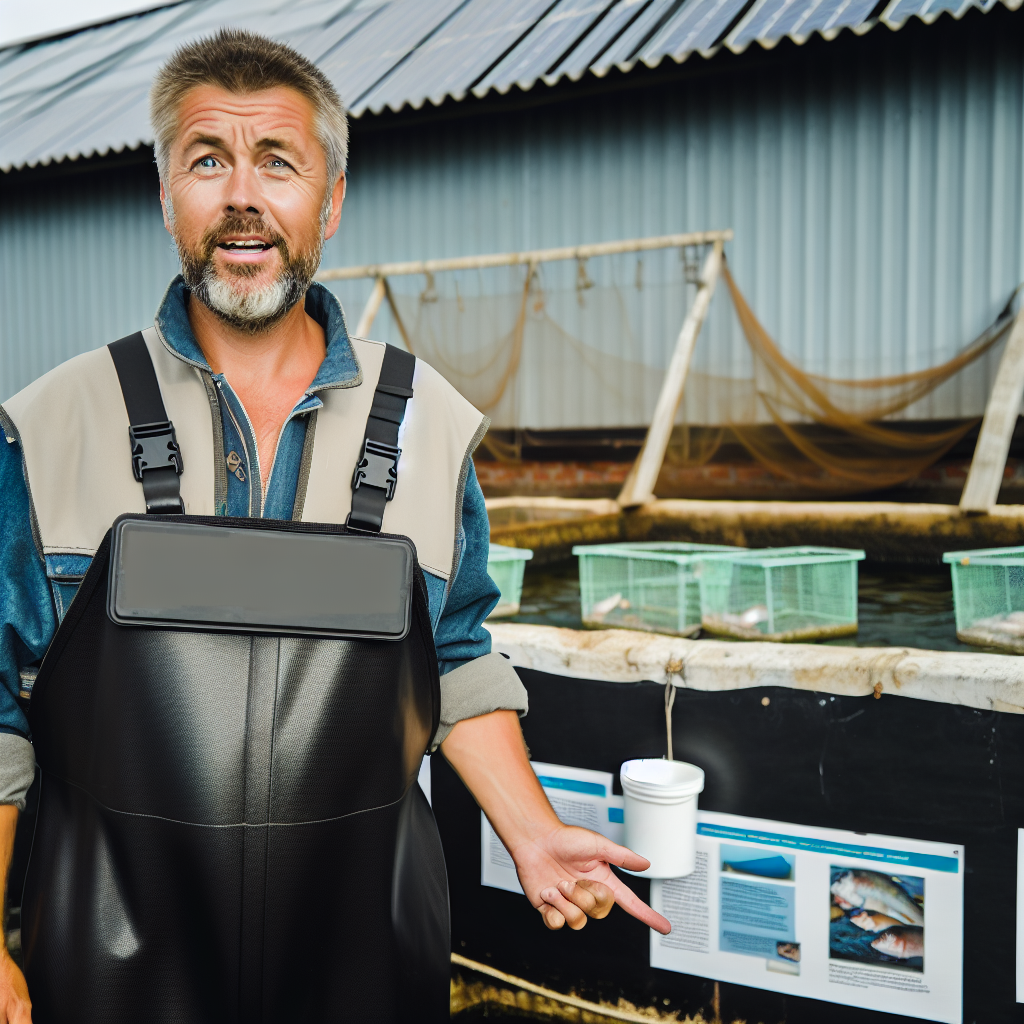
Environmental Impact: Minimizing Harm and Promoting Biodiversity
Understanding the Importance of Sustainability
Sustainable fish farming plays a crucial role in reducing environmental harm.
It promotes the responsible use of aquatic resources.
This approach ensures the health of marine ecosystems.
Impact on Ecosystems
Fish farming can disrupt local habitats if not managed properly.
However, sustainable practices minimize these disruptions significantly.
Implementing integrated farming systems improves biodiversity.
These systems often include plants or other organisms.
Strategies for Reducing Environmental Impact
- Use of sustainable feed formulations.
- Implementation of water recycling technologies.
- Adoption of polyculture systems with diverse species.
- Regular monitoring of water quality and species health.
Promoting Biodiversity
Maintaining diverse species helps stabilize ecosystems.
Sustainable fish farming encourages genetic diversity through selective breeding.
This strategy enhances the resilience of populations against diseases.
Engaging Local Communities
Involving local communities fosters greater environmental stewardship.
Community-based initiatives often lead to innovative solutions.
Moreover, these programs educate producers on sustainable practices.
Regulatory Support and Certification
Certifications help consumers identify sustainable products.
Regulatory frameworks play a vital role in promoting best practices.
These measures help mitigate negative environmental impacts.
Regulations and Certifications for Sustainable Fish Farming
Importance of Regulations
Regulations play a crucial role in sustainable fish farming.
They set guidelines that promote environmental health.
Also, regulations ensure fair practices within the industry.
Compliance fosters consumer trust and market stability.
Types of Regulations
Various regulations govern sustainable fish farming practices.
These include environmental, health, and safety regulations.
Additionally, regional guidelines often address specific issues.
Environmental Regulations
Environmental regulations focus on protecting aquatic ecosystems.
Showcase Your Farming Business
Publish your professional farming services profile on our blog for a one-time fee of $200 and reach a dedicated audience of farmers and agribusiness owners.
Publish Your ProfileThese rules limit pollution and conserve natural habitats.
Furthermore, they establish quotas for fish catches to prevent overfishing.
Health and Safety Regulations
Health and safety regulations aim to protect farmworkers and consumers.
They cover the use of chemicals and antibiotics.
Moreover, these regulations dictate proper handling and processing methods.
Certifications for Sustainable Practices
Certifications validate adherence to sustainable farming practices.
These labels signal commitment to responsible aquaculture.
Global Aquaculture Alliance Standards
The Global Aquaculture Alliance offers widely recognized standards.
These standards promote responsible fish farming globally.
They cover social responsibility, environmental stewardship, and food safety.
Marine Stewardship Council
The Marine Stewardship Council certification applies to wild fisheries.
It ensures that fish are caught in an environmentally sustainable manner.
This certification boosts consumer confidence in seafood choices.
Benefits of Compliance
Complying with regulations and certifications yields various benefits.
It enhances product quality and marketability.
Also, compliance reduces risks associated with legal liabilities.
Ultimately, it promotes long-term sustainability in the industry.
Innovative Technologies in Sustainable Aquaculture
Introduction to Aquaculture Technologies
Aquaculture technologies enhance fish farming sustainability.
They address environmental challenges effectively.
Furthermore, they improve efficiency and productivity.
Recirculating Aquaculture Systems
Recirculating aquaculture systems (RAS) revolutionize fish farming.
These systems recycle water, minimizing waste.
Additionally, RAS reduces water consumption significantly.
Farmers can maintain optimal water quality for fish health.
Integrated Multi-Trophic Aquaculture
Integrated multi-trophic aquaculture (IMTA) promotes diversity.
It involves cultivating different species together.
This practice recycles nutrients effectively.
Consequently, it leads to improved overall system efficiency.
Use of Automation and AI
Automation and artificial intelligence (AI) streamline operations.
These technologies monitor water quality continuously.
They also optimize feeding schedules for fish.
Ultimately, this minimizes waste and reduces costs.
Genetic Improvements for Sustainability
Genetic engineering enhances fish stock resilience.
It produces fish that grow faster and require less feed.
This innovation significantly boosts production levels.
Moreover, it reduces pressure on wild fish populations.
Renewable Energy in Aquaculture
Renewable energy sources power many aquaculture facilities.
Solar and wind energy reduce carbon footprints.
Implementing these solutions lowers operational costs.
Consequently, sustainable practices become more accessible.
Showcase Your Farming Business
Publish your professional farming services profile on our blog for a one-time fee of $200 and reach a dedicated audience of farmers and agribusiness owners.
Publish Your ProfileFuture Trends in Sustainable Aquaculture
The future of aquaculture looks promising with innovation.
Emerging technologies continue to improve sustainability.
As a result, fish farming becomes more efficient and eco-friendly.
Ongoing research will drive these advancements forward.
Additional Resources
Alternative Farming Systems Information Center (AFSIC) | National …

